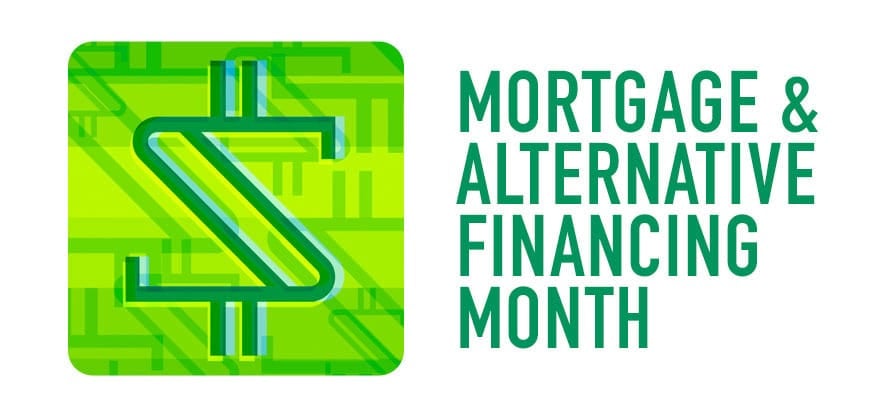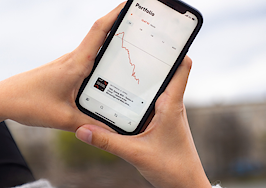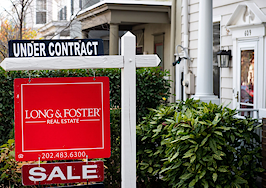All June long we’re going deeper on mortgage and title — looking at where the mortgage market is headed, how products are evolving and alternative financing options changing the game. Join us for Mortgage and Alternative Financing Month. And subscribe to Inman’s Extra Credit for weekly updates all year long.
Weakening demand for both purchase loans and refinancing last week brought mortgage applications down to the lowest level in 22 years, according to a weekly survey by the Mortgage Bankers Association.
The MBA’s Weekly Mortgage Applications Survey shows applications for purchase loans fell by a seasonally adjusted 7 percent from the week before, and were down 21 percent from the same time last year. Requests to refinance were down 6 percent week-over-week, and 75 percent from a year ago. The survey, which covers more than 75 percent of all U.S. retail residential mortgage applications, has been conducted since 1990.
After three consecutive weeks of declines, mortgage rates started creeping back up at the end of May, according to the Optimal Blue Mortgage Market Indices (OBMMI).

Joel Kan
“While rates were still lower than they were four weeks ago, they remain high enough to still suppress refinance activity,” said MBA forecaster Joel Kan, in a statement. “The purchase market has suffered from persistently low housing inventory and the jump in mortgage rates over the past months. These worsening affordability challenges have been particularly hard on prospective first-time buyers.”
Mortgage rates rebounding
The Optimal Blue Mortgage Market Indices show rates on 30-year fixed-rate mortgages reached their 2022 peak of 5.593 percent on May 6. After retreating by more than 30 basis points, rates have been in a steady upward trend since May 27. At 5.502 percent on Tuesday, rates on 30-year fixed-rate loans are only 9 basis points shy of their peak for the year. A basis point is one hundredth of a percent.
Rates are on the rise as bond market investors expect the Federal Reserve to continue raising the short-term federal funds rate this year, and also begin trimming the Fed’s nearly $9 trillion balance sheet.
The Fed holds $2.7 trillion in mortgage-backed securities that it bought as part of its “quantitative easing” program to keep mortgage rates low during the pandemic and in the wake of the 2007-09 recession.
With the Fed now embarking on “quantitative tightening” — letting that debt roll off its balance sheet — interest rates could come under renewed pressure.
For the week ending June 3, the MBA reported average rates for the following types of loans:
- For 30-year fixed-rate conforming mortgages (loan balances of $647,200 or less), rates averaged 5.40, up from 5.33 percent the week before. With points increased to 0.60 from 0.51 (including the origination fee) for 80 percent loan-to-value ratio (LTV) loans, the effective rate also increased.
- Rates for 30-year fixed-rate jumbo mortgages (loan balances greater than $647,200) averaged 4.99 percent, up from 4.93 percent the week before. With points also increasing to 0.44 from 0.41 (including the origination fee) for 80 percent LTV loans, the effective rate also increased.
- For 30-year fixed-rate FHA mortgages, rates averaged 5.30 percent, up from 5.20 percent the week before. With points increasing to 0.79 from 0.69 (including the origination fee) for 80 percent LTV loans, the effective rate also increased.
- Rates for 15-year fixed-rate mortgages averaged 4.62 percent, up from 4.59 percent the week before. With points increasing to 0.65 from 0.63 (including the origination fee) for 80 percent LTV loans, the effective rate also increased.
- For 5/1 adjustable-rate mortgages (ARMs), rates averaged 4.51 percent, up from 4.46 percent the week before. Although points remained at 0.68 (including the origination fee) for 80 percent LTV loans, the effective rate also increased.
Get Inman’s Extra Credit Newsletter delivered right to your inbox. A weekly roundup of all the biggest news in the world of mortgages and closings delivered every Wednesday. Click here to subscribe.










